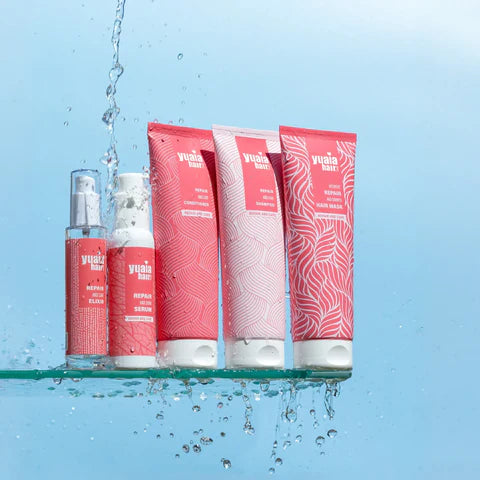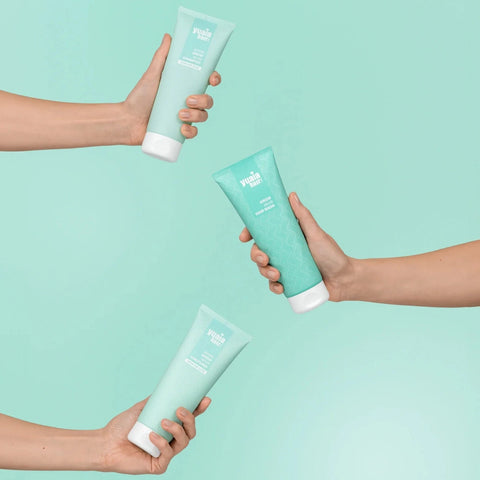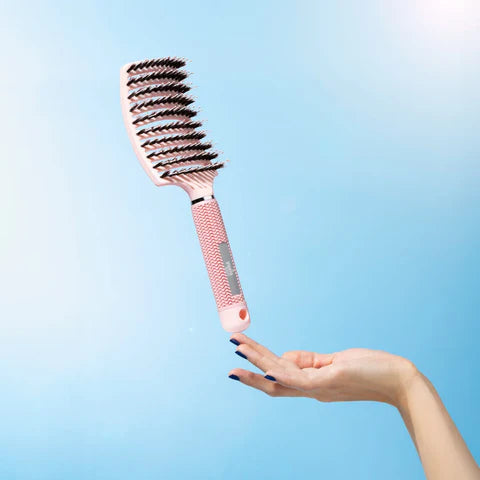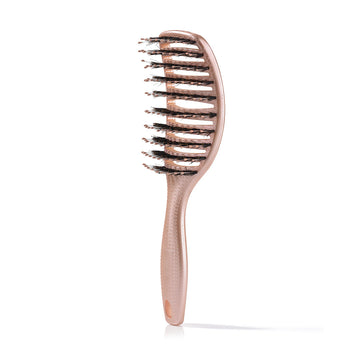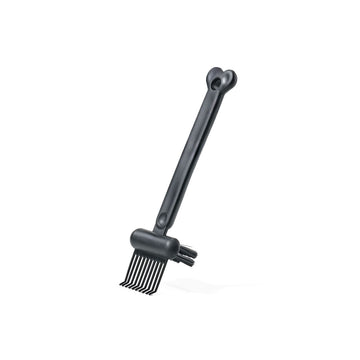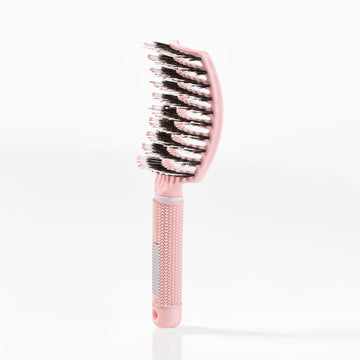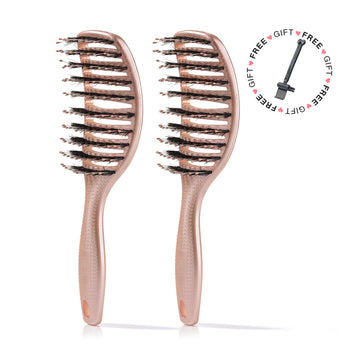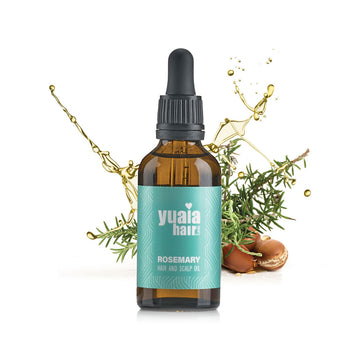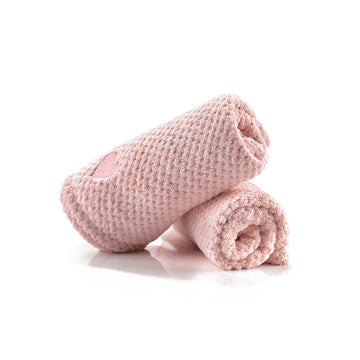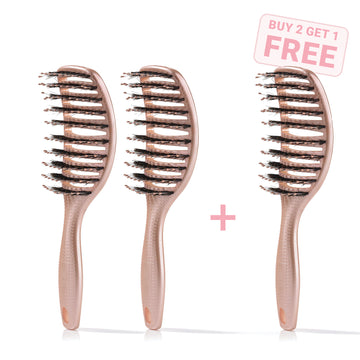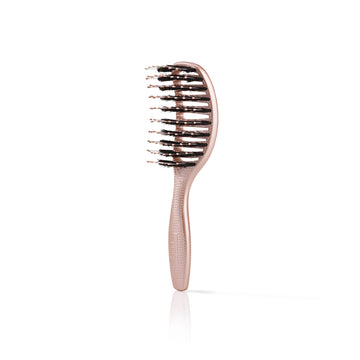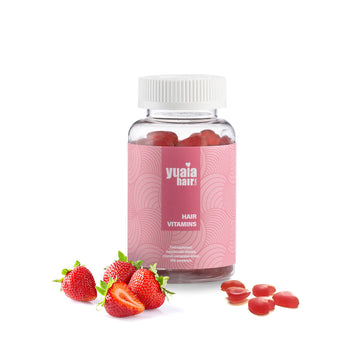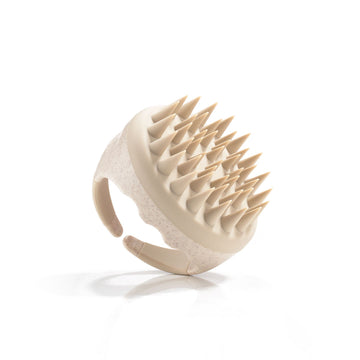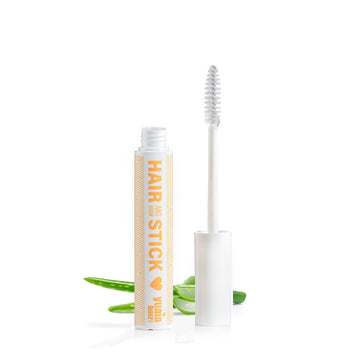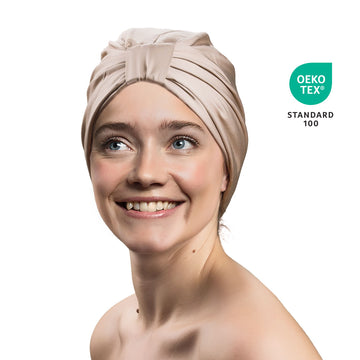
What are the benefits of using a comb?
Combs serve an important role in hair care routines and are tailored to specific needs. Typically flat with a single row of teeth, combs are excellent for detangling, parting, and precision styling. They are especially beneficial for wet or curly hair, as they glide through tangles with minimal resistance. Their streamlined design minimizes breakage and friction, making them ideal for gentle grooming, particularly when the hair is damp and more fragile.
Additionally, combs are highly effective for evenly distributing treatments or conditioner through the hair, ensuring thorough coverage.
What are the benefits of using a brush?
Brushes, in contrast, feature numerous bristles spread over a larger surface area, allowing them to interact with both the scalp and hair strands effectively. They are particularly well-suited for smoothing the hair, taming flyaways, enhancing volume, and spreading natural scalp oils down the hair shaft. This helps improve hydration, add shine, and maintain overall hair health.
Brushes also promote better scalp circulation and gentle exfoliation, which can support hair growth. The right choice ultimately depends on your hair type, styling goals, and whether your hair is wet or dry.
Hair type considerations
Your hair type significantly influences whether a comb or a brush is the more effective tool for daily grooming and styling.
For straight and fine hair, brushing is often the preferred method. It helps add volume, smooth strands, and distribute natural scalp oils evenly, promoting shine and overall hair health. Paddle or vented brushes work especially well for this hair type without causing static.
Wavy hair tends to be more versatile and may benefit from both combs and brushes, depending on your needs.
Curly hair, however, typically requires more careful handling. Wide-tooth combs are best suited for detangling, especially when hair is wet and conditioned. This approach helps minimize breakage and maintain the natural curl pattern.
When should you use what?
The choice between a comb and a brush depends on your hair’s condition and your styling needs. Combs are ideal for precision tasks like parting, sectioning, and detangling wet hair, especially with a wide-tooth design that minimizes breakage. Brushes, on the other hand, are best for dry hair—smoothing, adding volume, and enhancing shine. Knowing when to use each tool helps maintain hair health while achieving your desired look.
Wet or dry hair
The state of your hair—wet or dry—plays an important role in determining the appropriate styling tool.
Wet hair is more elastic and prone to breakage, making it vulnerable to damage if brushed with fine or densely packed bristles. In these situations, a wide-tooth comb is the safest and most effective choice. It allows you to gently detangle strands without pulling or snapping them, particularly when starting at the ends and working upward.
Dry hair, by contrast, is more resilient and better suited to brushing. Brushes are ideal for smoothing the hair’s surface, reducing frizz, and distributing natural oils from the scalp to the ends, which enhances shine and manageability. They are especially useful when styling, whether you're aiming to create volume, polish, or a sleek finish.
Styling techniques and desired outcomes
The tools you choose for styling should reflect your desired results. Brushes are ideal for adding volume, taming frizz, and enhancing shine, making them essential for blowouts, smooth finishes, and creating body in the hair. They distribute natural oils evenly along the hair shaft, promoting a healthier appearance and a polished look.
Combs, by contrast, offer precision and control. They are excellent for sectioning hair, defining parts, teasing for lift, or executing detailed styling such as braids and updos. A fine-tooth comb is perfect for smoothing and sculpting, while a wide-tooth comb is best for detangling or distributing product through damp hair without causing breakage.
Using the right tool ensures that your styling technique not only achieves the intended aesthetic but also maintains the integrity and health of your hair.
Impact on scalp health and hair growth
Both combing and brushing can stimulate the scalp, promoting increased blood circulation and healthier hair growth. Brushes with natural bristles - like boar bristles for example - help distribute sebum from the scalp through the lengths of the hair, nourishing and protecting it. Combs, while less effective at oil distribution, still contribute to scalp health when used gently and regularly.
How to maintain combs and brushes
Keeping your combs and brushes clean is key to maintaining healthy hair and effective styling. Over time, these tools collect oils, product buildup, and dead skin cells, which can transfer back onto freshly washed hair if not cleaned regularly.
Combs are typically easy to rinse using warm water and a mild shampoo. Brushes, especially those with natural bristles, may require more thorough care, including manual removal of trapped hair and deeper cleansing.
For a detailed guide on proper cleaning methods tailored to different brush types, read our blog post on brush maintenance.
Making the right choice for healthier, more manageable hair
Choosing between a comb and a brush should not be a one-size-fits-all decision. By considering your hair type, the condition of your hair, and your styling needs, you can select the tool that best supports your hair's health and your personal aesthetic.
 2-5 Tage Lieferung
2-5 Tage Lieferung
 Trusted Shop Garantie
Trusted Shop Garantie
 Zufriedenheitsgarantie
Zufriedenheitsgarantie


